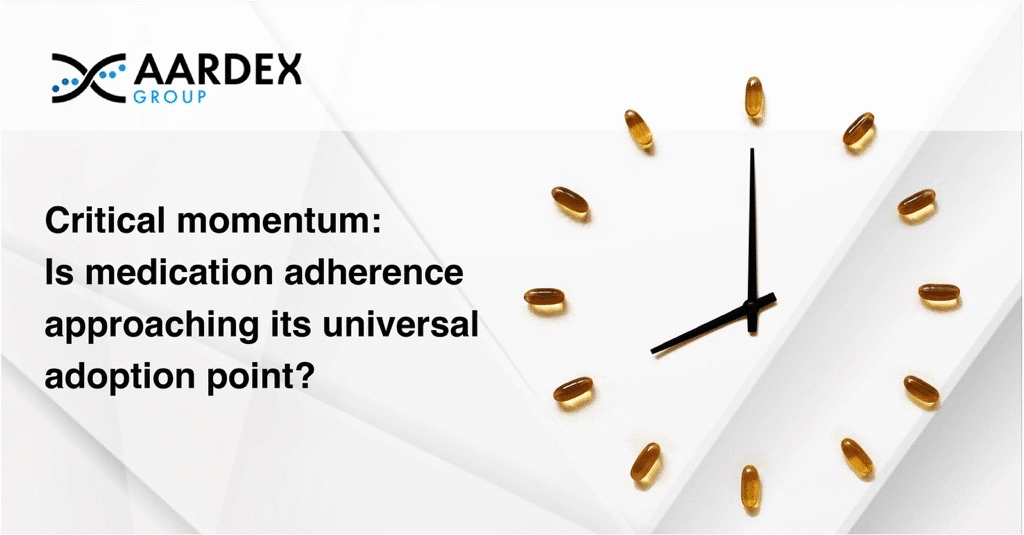The ‘Don’t Miss a Moment’ campaign – another chapter in the story of medication adherence
Years from now, in a future where healthcare is far more digitally embedded than it is today, the date of 27 March 2025 might well be regarded as the origin of a fundamental shift in attitudes to medication adherence.
This date marked the first ever World Adherence Day, an embryonic global initiative from the World Heart Federation that attracted the support of major patient groups and pharmaceutical organisations.[1] This patient-facing campaign aims to underline the vitally important role that adherence plays in improving patient outcomes, citing studies that associate good adherence with a 21% reduction in long-term mortality risk.
In promoting its core message of ‘Don’t Miss a Moment’, World Adherence Day aims to deliver direct improvements to the lives of patients who are managing chronic conditions including diabetes and cardiovascular disease. At the same time, the campaign sends a powerful message of the importance of medication adherence, and the fact that it is often inexplicably overlooked as an essential function of effective, sustainable healthcare systems.
WHO, OECD and Global Momentum for Better Adherence
The organisers of World Adherence Day are not the only ones who feel the time has come for this situation change. Encouragingly, momentum has also been continuing to build in this area among global healthcare policymakers and regulatory authorities. Indeed, the World Health Organisation (WHO) has been a long-time proponent for better adherence, both in terms of patients faithfully following the prescribed dosage for long-term therapies, and candidates sticking to the prescribed protocol in clinical trials.
Likewise, the Organisation for Economic Co-operation and Development (OECD) has looked to highlight the issue by calculating the real-world cost of non-adherence. Further to the conclusion that it contributes to nearly 200,000 premature deaths, the OECD suggested that the economic scale of the problem stood at €125 billion for European governments and $105 billion in the US through avoidable hospitalisations, emergency care, and outpatient visits.[2]
The Cost of Non-Adherence: A Financial and Clinical Burden
As well as being the source of inefficiencies and wasted cost in healthcare systems, the financial burden of non-adherence is further increased when medication waste is taken into account. In many countries, medicines represent around 15% of total healthcare expenditure and yet a significant portion of this investment is effectively lost to non-adherence – we estimate around half. As such, improving adherence can be seen as a critical factor not just in better patient outcomes, but in addressing the difficult challenge of restoring budget-constricted national healthcare systems to a state of sustainable financial equilibrium.
This point takes on even greater significance when looking to future models of medicine where personalized, adherence-informed therapeutic strategies are increasingly adopted in favour of one-size-fits-all approaches. For this patient-centric theory to be realised in full, however, it will be essential that patients are compliant with optimised long-term dosing regimens, and that they do not contribute to the damning statistic that up to 50% of patients discontinue treatment within a year.
Adherence in Clinical Trials: Challenges and Solutions
Problem recognised, how does this translate into action?
But the challenge does not end there. Underpinning the amount of medication prescribed to each patient is a drug-development process, and indeed culture, where non-adherence can currently go unacknowledged or undetected. And where clinical trials fail to account for real-world adherence, there is a higher risk that the situation is ‘rebalanced’ through inappropriately high dosing levels, compounding drug-investment inefficiency, elevating costs unnecessarily, and exposing patients to uncomfortable – and potentially dangerous – levels of toxicity.
Adherence within clinical trials, therefore, is an area that continues to attract greater scrutiny. Currently, trials are predicated on participants receiving the allocated intervention in full, and yet there is often little evidence of a systematic approach to adherence measurement.[3] Dominant legacy methods, such as pill count and patient self-report, are known to be prone to bias and human error, making them unreliable in comparison to alternative digital approaches.
The Rise of Digital Monitoring and Regulatory Shifts
While regulators might acknowledge the weaknesses of this status quo, and despite the weight of evidence to the contrary, any formal requirement to adopt digital adherence monitoring is inexplicably unlikely to be forthcoming in the short term. There are, however, strong indications that regulatory momentum and support is growing in the use of these tools to enhance trial data and integrity and help trial co-ordinators reach more robust conclusions that better support participant and patient safety.
Evidence of this shift can be seen in a series of recent international guidance documents, which firmly underline the expectation among policymakers for a change in approach when it comes to medication adherence. In late 2024, the World Health Organization (WHO) issued new best-practice guidance for clinical trials, formally identifying medication adherence as one of the top five risks to obtaining scientifically valid results.[4] For the first time, adherence is placed on par with fundamental design elements such as randomization, blinding, population definition, and sample size.
Building on this, in January 2025 the International Council for Harmonisation of Technical Requirements for Pharmaceuticals for Human Use (ICH) approved its E6(R3) guideline on Good Clinical Practice (GCP).[5] This has been designed to “provide a unified standard to facilitate the mutual acceptance of clinical trial data for ICH member countries and regions by applicable regulatory authorities”, which includes the European Medicines Agency and the US Food & Drug Administration (FDA).
Compliance with the guideline will require sponsors to define and justify their strategies to monitor participant adherence, with an explicit emphasis on data accuracy, reliability and governance. In doing so, it effectively signals the end of the era of unreliable methods like manual pill counts or self-reports, accelerating the transition to digital adherence technologies that can provide real-time, validated and auditable data streams.
This further adds to the momentum created through introduction of the ICH E9(R1) addendum on estimands and sensitivity analysis, which, while adopted in 2019, has only recently become embedded in trial design practices.[6] This guideline mandates that sponsors predefine intercurrent events (like poor adherence and early treatment discontinuation) and specify the strategy for determining how these will be addressed in the analysis. Given that these are among the most frequent and impactful intercurrent events, the guidance effectively makes the use of more reliable adherence measurement methods statistically and methodologically essential.
Finally, guidance published by the FDA on enrichment strategies for clinical trials and, more recently, on Digital Health Technologies (DHTs) for Remote Data Acquisition in Clinical Investigations, has laid the groundwork for a regulatory-driven shift towards the use of digital tools to enhance adherence.[7],[8] These documents support the use of digital monitoring not only to capture adherence, but also to provide timely feedback to participants, potentially improving adherence and reducing trial dropout.
Conclusion: A Turning Point for Clinical Research and Patient Care
Taken in isolation, each of the measures adopted by WHO, ICH and the FDA represent the need for significant change in clinical trial culture and practice. Taken together, they provide a clear collective signal that failure to measure and manage adherence is no longer acceptable in modern clinical research, and that digital monitoring methods provide a validated means of addressing the shortcomings of existing approaches and answering regulatory expectations for quality, credibility, and ethical rigour.
Like so many other technologies that were initially regarded as alternative, innovative or cutting-edge, digitally supported medication adherence is only going to continue on a path of acceptance and adoption. To what extent it will become seen as the norm, both in clinical trials and the treatment of chronic conditions remains to be seen. But with momentum in this area continuing to build, the chances of World Adherence Day 2025 being considered a touchpaper moment are growing stronger by the day.
Establishing hard evidence for your trial…
AARDEX has a best practice methodology, independent of any device package or software platform. Utilising our expertise and experience in medication adherence and patient compliance we acquire, monitor, analyse, guide and interpret data to deliver absolute clarity and bring confidence to sponsors, trialists, and ultimately, patients.
AARDEX is the only mature, robust and proven adherence solution on the market today, one that maximises the reward, mitigates the risk and delivers resolution for your clinical trial. All delivered with the clarity, integrity and certainty you need to proceed with complete confidence in the exposure-response.
[1] https://world-heart-federation.org/world-adherence-day/
[2] https://doi.org/10.1787/8178962c-en
[3] https://www.sciencedirect.com/science/article/pii/S1551714422001148
[4] https://www.who.int/publications/i/item/9789240097711
[5] https://database.ich.org/sites/default/files/ICH_E6%28R3%29_Step4_FinalGuideline_2025_0106.pdf
[6] https://database.ich.org/sites/default/files/E9-R1_Step4_Guideline_2019_1203.pdf
[7] https://www.fda.gov/regulatory-information/search-fda-guidance-documents/enrichment-strategies-clinical-trials-support-approval-human-drugs-and-biological-products
[8] https://www.fda.gov/regulatory-information/search-fda-guidance-documents/digital-health-technologies-remote-data-acquisition-clinical-investigations



